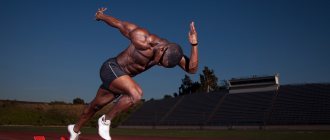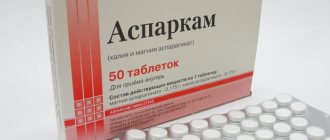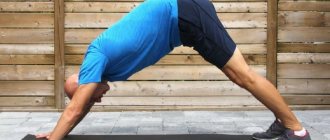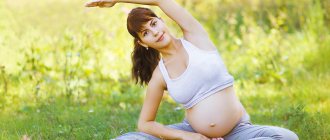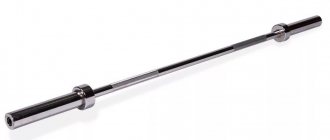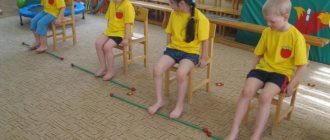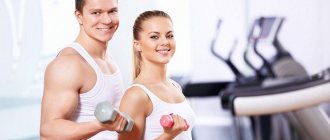- March 25, 2019
- Health
- Karina Perevalova
Keeping your body in good physical shape is a natural desire. It's no secret that for this you need to regularly expose the body to physical activity. However, the presence of varicose veins of the lower extremities often becomes a contraindication for sports. This is due to the fact that certain types of physical activity can significantly worsen the course of the pathological process. In this regard, many patients are interested in what exercises are not allowed for varicose veins of the legs, and which ones will bring invaluable benefits to the body.
Is it possible to exercise on exercise machines?
In this case, the determining factor is whether the person came to the hall for the first time or whether he has been visiting it for several years. Fitness is not a contraindication in the presence of varicose veins only if all exercises are performed correctly. As practice shows, beginners are more likely to get injured and harm their body without strictly following the algorithm of actions.
If a person has been going to the gym for many years, he knows the technique of doing the exercises by heart. In this case, the risk of injury and aggravation of the disease is much less.
But what should beginners do? If you have a desire to visit the gym, then you can study there. But it is important to remember two basic rules:
- During training, compression stockings must be worn on your legs. You can purchase it in pharmacies or salons specializing in the sale of orthopedic products. The prescription must be written by a doctor, based on the results of diagnostic tests.
- Classes must be supervised by a personal fitness trainer. He will tell you which exercises are prohibited for varicose veins, and will also make sure that the technique of the others is performed correctly.
During its development, the disease goes through 3 stages. It is the severity of the disease that is the determining factor in the choice of physical activity.
Stages of pathology:
- First. At this stage, there are no pronounced clinical manifestations. Often the only symptom is small blue nodules under the skin. At the first stage of varicose veins, you can exercise on exercise machines. But you need to choose those on which the lower limbs do not receive heavy loads. Immediately before starting your workout, you need to take time to do some quality stretching. This will prepare the muscle tissue for stress and prevent the development of thrombophlebitis. It is also important to know what not to do with varicose veins of the legs at this stage. Experts do not recommend running on a treadmill before starting a workout.
- Second. At this stage, the symptoms of the disease become more pronounced. The veins in the legs are much better visible. In addition, a person suffers from a feeling of heaviness in the lower extremities and swelling in the evening. Prohibited exercises for stage 2 varicose veins: strength training, running, exercise on an exercise bike, jumping and step. At this stage of development of the disease, experts do not recommend visiting the gym at all. They recommend swimming, water aerobics and yoga.
- Third. Characterized by the presence of pronounced symptoms. The venous nodes become huge, the skin in the affected area darkens, and the limbs swell not only in the evening. At this stage, you can go to the gym. But the load on the legs must be completely eliminated. In this case, doctors recommend doing water aerobics. In addition, walking will be useful.
Thus, you can visit the gym at any stage. However, you need to exercise exclusively under the supervision of an instructor, who will tell you what exercises cannot be done with varicose veins.
Acceptable activities for scoliosis
What physical activities are allowed and what not to do with scoliosis? The development of this pathology has 4 stages. At the first stage - that is, the easiest - the initial stage of spinal deformation occurs; correcting such a violation is not difficult. However, the first stage in adults is very rare. The reason is that scoliosis was not detected in time in childhood, and its form became more complicated.
Other stages of the development of the disease are severe, during which not all types of physical activity are allowed, and some exercises should be treated with extreme caution. Only a specialist doctor allows or prohibits certain types of physical activity for scoliosis after a complete examination.
General recommendations for playing sports are the following:
Only a specialist doctor allows or prohibits certain types of physical activity for scoliosis after a complete examination. General recommendations for playing sports are the following:
- The load should be gentle.
- You need to do physical exercises that are approved by your doctor every day.
- Artistic dancing is allowed.
- Bodybuilding is recommended for non-advanced stages of scoliosis development.
- You are allowed to exercise in the gym.
- Hanging on the horizontal bar is highly recommended by doctors.
- Swimming is the key to a healthy spine.
Those types of physical activities that are on the stop list can be done in several cases. For example, if you perform them with some modifications, stretch the spine by resting on a ball - a fitball.
You can do the exercises deviating from the norm of time and from a different angle. In this case, it is acceptable to skate, play basketball and do light jogging. Sometimes such types of physical activity are recommended by a trainer as preventative treatment, which must be performed strictly under his supervision.
You can definitely go swimming, skiing, cycling and doing pull-ups on the horizontal bar (especially in the first or second stages of scoliosis). It is recommended to take up dancing (not street dancing, but artistic dancing).
Swimming for scoliosis
The pool has a huge impact on the favorable development of the spine. If you exercise regularly, you can improve your overall health, even for people who have a tendency towards scoliosis.
Swimming training puts a symmetrical load on the spine, and is perhaps the highest quality and most effective means in the fight against scoliosis. In the pool you should try to combine breathing techniques and swimming. In order to learn some effective movements, you need to consult a trainer.
The greatest benefit comes from backstroke swimming. In general, playing this type of sport strengthens the abdominal muscles, creates favorable conditions for strengthening the spine, develops coordination of movements, completely relaxes and relieves the back.
Dance class
A big misconception among many people is that dancing can harm the spine. This opinion is wrong. Ballroom and artistic dancing classes help increase the plasticity and flexibility of the body and spine. They have the greatest possible effect in improving and aligning the spine. Medical specialists strongly recommend engaging in this type of physical activity. This is especially necessary for young children and teenagers.
Training must be attended at least three times a week. The ideal option is to visit the dance hall every day, except on weekends. Do not forget that before dancing, as before any other physical activity, you must first do a warm-up. This is done in order to properly warm up the muscles and prevent injury to the spinal ligaments.
It is worth remembering that you cannot choose one or another type of exercise on your own. Before including anything in your physical training, it is worth consulting with a medical specialist. He must conduct a full examination, determine the minimum and maximum load levels that are suitable for the spine.
In no case should you choose one or another type of physical activity on your own; it is imperative to consult with a medical specialist who will conduct a full examination, prescribe a course of treatment and a set of preventive exercises. The main thing is not to overload the spine and consult a doctor in time.
Is it possible to do squats?
They not only help get rid of excess fat deposits. Squats help improve the shape of the gluteal muscles and lower limbs, and also increase a person’s endurance.
This physical exercise for varicose veins is not contraindicated, but only if the disease is at the first stage of development. Phlebologists say that in the presence of pronounced clinical manifestations, squats are prohibited.
The exercise must be performed under the supervision of a trainer. This is the only way to avoid the development of negative consequences, in particular, the worsening of varicose veins.
Rules for performing squats:
- You need to make sure your back is straight at all times.
- You need to bend your lower limbs at the knees slowly, avoiding sudden movements. This not only improves blood circulation, but also increases the elasticity of the walls of blood vessels.
- The feet should not leave the floor while squatting.
- You need to do the exercises without weights. This can lead to damage to already weakened blood vessels.
In addition, it is recommended to do light squats for the first few weeks. After this, you can move on to the deep ones.
Exercises for neck muscles
Have you seen guys in the gym who do wrestling and train with iron from time to time? You can often see them shaking their necks. If you saw it, then forget it and never repeat after them. Why? Because you don't need it. If you get carried away and achieve visually noticeable hypertrophy, you will end up with an overly powerful neck. But that's not the worst thing. It is important that performing exercises with weights on the muscles of the cervical spine can lead to consequences in the form of pinched nerves, headaches and problems with the vertebrae in the corresponding area. It’s better not to joke with this, and in fact, shaking a girl’s neck... who even put you up to this?
What else should you pay attention to? When performing bench exercises such as barbell presses, never press the back of your head into the bench when attempting to press a heavy weight. This can lead to cervical injuries. Trust me - this is not what you need.
Is it possible to jump rope
This activity is very effective. That is why people who are interested in what exercises are not allowed for varicose veins often worry that jumping will be prohibited.
Their worries are not in vain: phlebologists do not have a common opinion on this issue. Some argue that jumping rope significantly improves the functioning of most internal organs and increases endurance without worsening the course of varicose veins. Others are sure that the load on the legs during exercise is colossal.
In this case, it is necessary to obtain permission from the attending physician. The specialist will analyze the diagnostic results and assess the balance of risk and possible benefit.
Even if the doctor gives permission to practice jumping, they must be performed while observing the following rules:
- Compression products should be worn on your legs during training.
- You need to lower your entire foot to the floor/ground. Jumping on toes is strictly prohibited.
After completing the workout, you need to take a contrast shower and treat the skin in the affected area with a venotonic.
Restrictions when practicing physical therapy
Drug treatment can only to a small extent affect the pathological process.
The entire emphasis is on therapeutic exercises. The exercises are designed to, if not completely, then at least partially restore the normal configuration of the spine. In addition, the muscle corset is strengthened, blood flow through the vessels is improved, and the functioning of internal organs is normalized. But therapeutic exercises can bring not only benefits, but also harm. The following are contraindicated exercises for scoliosis:
- Running is a relative contraindication. You can run only with a slight to moderate curvature of the spine. Running is prohibited with scoliosis of 3-4 degrees, as well as with a rapidly progressing process.
- All exercises performed on one leg, be it standing, lunges forward and to the side with or without dumbbells. These exercises negatively affect the configuration of the pelvis, which is already curved due to scoliosis.
- For the same reason, it is forbidden to sit in the lotus position. This pose involves twisting the legs at the knee joints.
- Somersaults are too dangerous in terms of injury even for a normal spine. Therefore, in case of scoliosis, they are strictly contraindicated.
- Dancing and gymnastics create a high, uneven load on the spine. Therefore, if it is bent, it is contraindicated.
- All exercises that involve a vertical axial load on the spine and circular movements with turns are prohibited.
- Outdoor sports games (football, badminton, volleyball) are also contraindicated. Some of them are associated with fast running, while others are associated with rapid turns of the body.
A natural question arises: what is allowed then? You can get the answer to this question from a physical therapy specialist. After all, all health-improving gymnastics for scoliosis are carried out on his recommendation and under his personal supervision.
Is it possible to dance
Phlebologists have a positive attitude towards this sport. During dancing, metabolic processes improve, the walls of blood vessels are strengthened, the outflow of liquid connective tissue and lymph is normalized, and muscles are strengthened.
Phlebologists recommend giving preference to:
- Bachate.
- Rumba.
- Salsa.
- Oriental and ballroom dancing.
But Irish people with varicose veins of the lower extremities are prohibited. This is due to the fact that such dances often lead to a worsening of the disease. A person develops more and more protruding blue nodes and redness occurs. In addition, the walls of blood vessels become even more fragile.
Working with free weights
Both professionals and amateurs are interested in what exercises should not be done for varicose veins of the legs. Doctors prohibit lifting weights if you have this disease. Experts say that it is permissible to exercise with a weight not exceeding 5 kg. Unfortunately, sometimes the presence of varicose veins forces you to give up your usual type of physical activity.
What happens if a person ignores the ban:
- When lifting dumbbells or a barbell, the pressure in the veins will increase to critical levels.
- The valves of the blood vessels will not be able to pass enough blood to the heart muscle.
- Liquid connective tissue will begin to stagnate.
- Weak vessels will begin to be damaged at any time, which poses a serious threat to health.
Fortunately, there are currently many methods of surgical treatment of varicose veins. As a rule, this is what professional athletes resort to.
Doctors recommend that amateurs switch their attention to the hot iron. This is a type of fitness that involves a lot of physical exercise. For varicose veins of the lower extremities, a hot iron is not contraindicated only at the early stage of development of the disease. At a later stage it can be harmful. A set of exercises should be compiled by a trainer, taking into account the presence of an illness in a person. In addition, you need to exercise exclusively in compression hosiery.
For beginners, experienced instructors most often offer to master the bar. This is not a prohibited exercise for varicose veins of the legs. At the same time, even deep muscles are worked out during the plank, which is a good alternative to power loads, which are contraindicated in the presence of pathology. In addition, the exercise has several variations, thanks to which you can significantly reduce the degree of load on the lower limbs.
Techniques for varicose veins:
- Place your hands on the floor and place your feet on an exercise ball. In this case, the muscles of the back, arms and abs are well worked out.
- Place your hands on the floor. Bend your legs alternately at the knees and pull them towards your chest. This exercise is called a dynamic plank.
- Lie on your side. Bend your elbows and rest your hands on the floor. Lift your pelvis and legs off the floor. Only the side of the foot should rest against it. The legs should be perfectly straight.
Thus, phlebologists do not recommend exercising with free weights if you have varicose veins. As an alternative, you can consider a hot iron. But even in this case, the weight of the equipment should be no more than 5 kg.
Restrictions in sports
You should never resort to self-treatment of a disease with physical exercise. The wrong type of sport can aggravate the disease and worsen symptoms. The main thing is to avoid such sports activities:
- Any running is prohibited for patients with scoliosis of 3 and 4 degrees. The rest are allowed such a load, but only after consulting a doctor.
- Circular or twisting movements are prohibited, especially in a vertical position, as they exert a strong axial load.
- Doctors prohibit all team sports games, since football is associated with fast running, volleyball with sudden movements; Other outdoor games are characterized in a similar way.
- Gymnastics puts stress on the spine and is therefore not allowed, just like dancing. At the same time, not all sports are prohibited, but only warm-up and stretching of the spine.
- Exercises that require balance or are performed on one leg are not acceptable because they are asymmetrical and can worsen scoliosis.
- Somersaults are very dangerous for such a disease, therefore they are contraindicated.
- Some yoga poses, including the lotus, are prohibited, although there are a number of poses used in treatment.
- Any axial loads. They can quickly and irreversibly damage the spine and increase the angle of curvature.
Be sure to read: why your back hurts after running
In addition, there are contraindications to the technique of performing many other exercises. Regardless of the degree of scoliosis, it is prohibited to jump from the bar. So, in this case, the back is in a relaxed state, and jumping creates an uneven, large axial load. As a result, you can get an S-shaped scoliosis from ordinary scoliosis.
Also, when working with heavy weights (for weightlifters, athletes and athletes), it is necessary to ensure that the load is uniform. In view of this, rows and presses with one arm are prohibited. Instead, it is recommended to replace them with lat pull-downs and bench presses (when the back is completely relaxed). Many exercises can only be performed with a rigid fixation corset.
Useful exercises for legs with varicose veins
Doctors recommend taking long walks more often. Light running is also not prohibited. But it should be moderate, that is, characterized by short duration and average pace. The lower extremities should also be protected with compression products.
Running is contraindicated for people suffering from obesity and pathologies of the cardiovascular system. In combination with varicose veins, these ailments pose a serious threat to health. Especially if the disease is severe.
There are many exercises to treat varicose veins. Before performing them, you need to familiarize yourself with the basic rules:
- In order to prevent overstrain of both the blood vessels and the lower extremities in general, it is necessary to always exercise in compression hosiery.
- Choose only the right and comfortable shoes. It shouldn't be tight.
- If signs of leg fatigue appear, the workout must be completed.
- Drink as much water as possible during exercise.
- Exercises should be performed slowly, avoiding sudden movements.
- It is better to do several sets and rest for a long time between them, than to perform a small number of repetitions and not allow the body to relax.
What exercises can you do for varicose veins:
- Take a standing position, with your feet parallel to each other. Slowly rise onto your tiptoes, then just as slowly lower yourself down. The number of repetitions is 20.
- The starting position is the same. Stand on your toes and walk on them for 5 minutes. Then do the same, but on your heels.
- Walk for 5 minutes without lifting your feet off the floor at all. Many people associate this exercise with a ski step.
- In a standing position, place your right foot on your left foot. Rise slowly onto your toes. Then change legs. The number of repetitions is 10 for each limb.
- Sit on a chair. Raise your right leg slightly. Rotate your foot first clockwise and then counterclockwise. Change leg. The number of repetitions is 20 for each limb.
- In a sitting position, bend your toes. Maintain this position until significant tension occurs. Only after this can you relax. Number of repetitions - 10.
- Lie on your back on a hard and flat surface. Bend your knees. Use your limbs to imitate riding a bicycle. In this case, the legs should be fully straightened during the exercise. This way the lesson will be more productive.
- Lie on your back. Bend your knees and pull them towards your chest. After this, they need to be slowly straightened and lowered to the floor.
- The starting position is the same. Straighten your legs, extend your arms along your body. Slowly raise your lower limbs above the floor. Perform crosses with them. The rhythm should be average and breathing should be even.
- Lie down on the floor. Legs should be bent at the knees and slightly apart. Slowly raise your hips as high as possible. Don't rush down. Number of repetitions - 30.
- Take a knee-elbow position. Straighten one leg. Then it needs to be bent at the knee so that the limb forms a right angle. Slowly reach your heel towards the ceiling. The number of repetitions is 25 for each limb.
Leg exercises for varicose veins do not involve intensive muscle training. However, by doing them, you can still maintain good limb shape.
You don't have to force yourself. If your condition is unsatisfactory, it is better to skip the workout.
No. 10. Pumping the oblique abdominal muscles (lateral bending with weights, in a simulator, etc.)
Without a doubt, a thin waist is every girl’s dream.
I agree with this. Thin narrow waist = makes a woman more graceful, beautiful and feminine.
However, absolutely any such exercises do not reduce your waist, but, on the contrary, make it even larger than you currently have.
That is, by doing all these exercises on the oblique abdominal muscles, your waist will expand (become larger), and the larger it becomes in that very unpleasant silhouette part.
Therefore, I categorically do not recommend performing any exercises on this area.
In addition, the obliques themselves are trained in many basic compound exercises, like squats, etc... so, in my opinion, there is no point in training them separately...
Lateral twists only cause harm
Ps If you think that exercises (side crunches and its variants) burn fat in this area (or “reduce the waist”), then you are wildly mistaken, dear.
Absolutely all exercises with weights are aimed at increasing muscle size, not decreasing it.
The severity of the obliques (“scrapes”) depends somewhat on size, as well as on the amount of fat in your body (including on the sides). This means that proper nutrition (diet) is much more important here than any exercise... therefore, I recommend: “Diet for quick weight loss.”
Ideally, of course, it is better to purchase my training course, which has been completely updated and created based on the latest scientific data and practical experience:
What exercises should you not do if you have varicose veins in your legs?
Regular exercise is an excellent prevention of the disease. In addition, if the body is constantly exposed to moderate physical activity, the disease often stops its development. However, there are a number of exercises that are not at all compatible with the disease. This is due to the fact that they contribute to the progression of pathology and, accordingly, a deterioration in the quality of life.
What exercises should not be done with varicose veins of the legs:
- Lunges.
- Squats with heavy dumbbells or a barbell, especially deep ones. As mentioned above, the exercise can be done at an early stage of the disease, but without the use of additional equipment.
- Everything that is included in the training plan of weightlifters.
In addition, it is unacceptable to climb rocks and play football for a long time. This is the main list, it can be supplemented by the attending physician. It is he who can provide information about what exercises cannot be done with varicose veins of the legs, based on the results of laboratory and instrumental studies.
Prohibited and permitted sports
Phlebologists note that if you have an illness, it is unacceptable to do:
- Powerlifting.
- Run fast.
- Step aerobics.
Participation in these sports negatively affects the condition of the walls of blood vessels. Against the backdrop of high-intensity loads, the pressure indicator increases significantly. As a result, the walls of the blood vessels are stretched. A natural consequence is the formation of new nodes.
Phlebologists recommend paying attention to the following sports:
- Water aerobics. Exercising in water helps improve the condition of both skin and blood vessels. In addition, swimming in a short time helps to get rid of excess weight.
- Nordic walking. During exercise, the pressure in the veins decreases, due to which the vessels are able to function normally.
- Yoga. Most asanas are performed with raised legs. In this regard, all phlebologists agree that yoga is the best sport for varicose veins.
- Pilates. During exercise, the lower limbs experience virtually no stress.
Both a trainer and a doctor can provide information about what not to do with varicose veins of the legs. However, it is preferable to first consult a phlebologist. The doctor will help you decide on the type of sport based on the results of diagnostic studies.
What is prohibited for varicose veins of the lower extremities
It often happens that a person engages in only permitted sports and follows all doctor’s recommendations. But the disease continues to progress. In this case, you need to analyze your lifestyle.
What not to do with varicose veins on the legs:
- Allow extra pounds to appear. Obesity is one of the main provoking factors in the development of the disease. The diet for varicose veins is not strict, but it is necessary to follow it. The following products should be excluded from the diet: flour and confectionery products, animal fats, spicy and salty foods, coffee, chicory, alcohol-containing drinks, celery.
- Lead a lifestyle that does not involve physical activity. In this case, we are talking not only about employees of various offices whose work is sedentary. People who spend most of the day on their feet are also at risk. Prime examples are chefs and hairdressers.
- Honey and cupping massage. Currently, these procedures are very effective in the fight against excess fat deposits. And many patients resort to them, refusing to engage in prohibited sports. However, during a honey massage, the risk of damage to the veins increases significantly. This is due to the fact that the procedure is associated with a pronounced mechanical effect on the tissue. Cupping massage is contraindicated due to the fact that during its implementation the pressure indicator increases significantly.
- Self-prescribe combined oral contraceptives. This applies to women. When taking incorrectly selected pills, the liquid connective tissue begins to thicken, which leads to a worsening of the situation.
- Carry out wraps. In most cases, the body temperature rises locally during the procedure. As a result, the veins expand and the pressure in them increases. A natural consequence is the formation of new nodes.
What else is not allowed for varicose veins on the legs? Patients need to avoid uncomfortable shoes. Women are strictly prohibited from wearing high heels.
Thus, to stop the progression of the disease, it is not enough to choose the right sport. It is important to make adjustments to your overall lifestyle.
Tilts down
These exercises help stretch the muscles in your back and legs, but they also put too much pressure on your lower back. Therefore, trainers recommend that people over 40 years old give them up. As you age, the joints connecting your lower back to your pelvis may become weaker. Therefore, such exercises can damage them, and the person will feel severe pain in the lumbar region. Moreover, deep bending can negatively affect the cervical spine and increase blood pressure. You can do yoga instead. There are a huge variety of poses that allow you to gently stretch your back and legs without damaging your joints.
Learning to tolerate imperfection is part of a self-improvement project.
Doctor, my soul hurts. The doctor's answer helps you find self-love
Private terminal in New York looks more like a ski chalet than an airport (photo)
